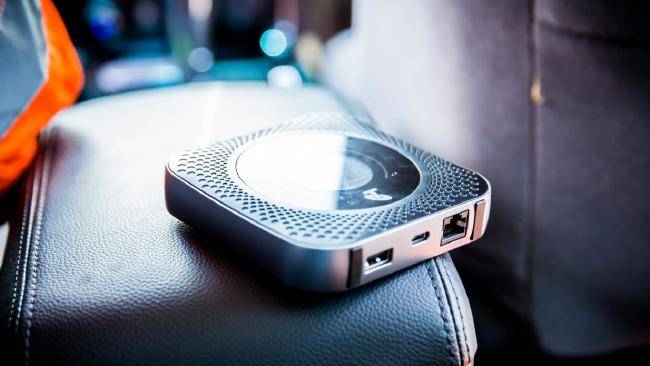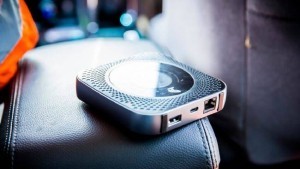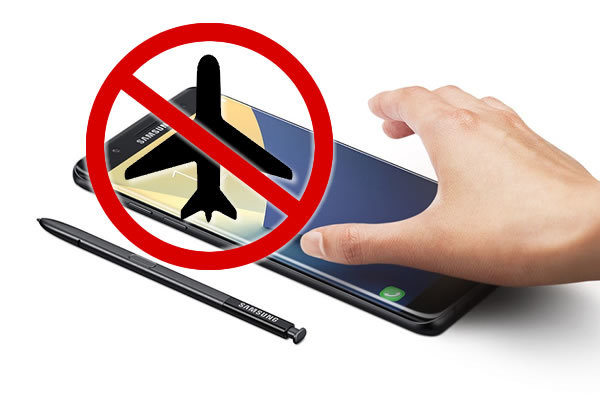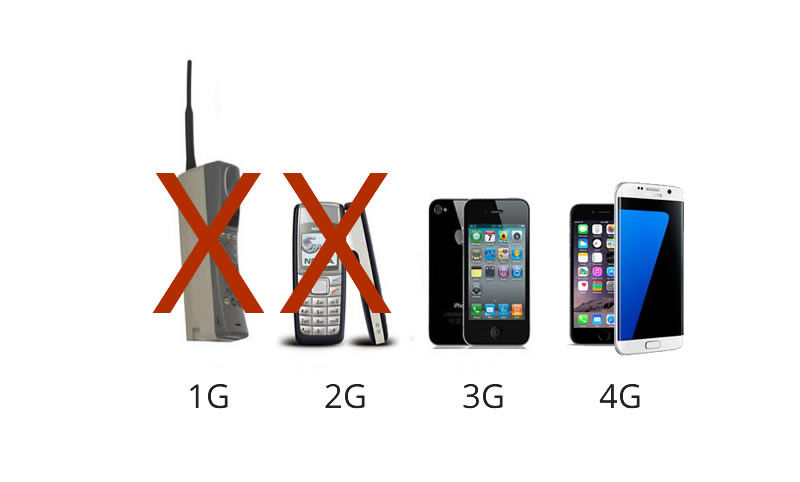


Telstra’s Gigabit LTE testing brings on unbelievable speeds for mobile internet
If there is anything that can make our inner “nerds” very happy, it is the possibility of faster internet!
TELSTRA has tested their world’s first Gigabit LTE mobile network capable of unprecedented mobile broadband speeds.
LTE technology
Published on: Feb 2, 2017
The new LTE technology – which stands for “Long Term Evolution” and is a term used to denote improvements in mobile broadband – means Telstra’s network will soon be capable of download speeds of up to one gigabit per second. Now wouldn’t that be great!
At such speeds users could download an hour-long high definition TV show on their phone in less than 20 seconds.
In partnership with Netgear, chip maker Qualcomm and infrastructure provider Ericsson, the Telstra network will allow its customers to receive downloads speeds of up to 1Gpbs and upload speeds of 150Mbps over its 4G network.
By comparison, the top home broadband packages currently offered by the NBN reach speeds of up to 100Mbps, about one tenth of the peak speeds Telstra says its new mobile network can achieve in “laboratory-like” conditions. However the NBN’s fibre connections will soon boast reliable 1Gbps fixed line connections and be much cheaper than mobile broadband.
Telstra impressed media and industry members in Sydney when it tested the network and unveiled a new router to let customers tap into the super fast speeds.
Nighthawk M1 mobile router
 Netgear and Telstra launched the world’s first Gigabit LTE device, the Nighthawk M1 mobile router.
Netgear and Telstra launched the world’s first Gigabit LTE device, the Nighthawk M1 mobile router.
According to Telstra, the pocket sized device will allow customers to download a 300MB hour long TV episode in as little as 16 seconds and a 3GB HD Movie in as little as three minutes.
The Nighthawk M1 device uses one SIM card and uses multiple 4G bands. It can connect up to 20 devices to the internet at once and will be available in late February for $360 upfront or on a range of plans.
The Netgear Nighthawk M1 device can be used to deliver download speeds up to one gigabit per second from the mobile network.
In a demonstration for assembled media on Monday to demonstrate the new technology, a computer was connected to Gigabit LTE and performed several tests on speedtest.net, reaching speeds of 900Mbps.
“We showcased the incredible customer experience a gigabit class LTE mobile device and network can deliver,” Telstra’s device management director Andrew Volard said in a blog post yesterday.
“It’s going help people further embrace a new breed of mobile applications and experiences including immersive virtual reality, connected cloud computing and rich entertainment,” he said.
“And it brings us one step closer to introducing 5G in Australia.”
However there is a few things to iron out. At this stage the speeds have only been delivered in “laboratory-like” conditions and, as Telstra admits, will likely be considerably slower in the real world.
It’s understood that Telstra has begun to launch part of the network in selected Australian capital city CBDs but it won’t be available throughout Australia for some time.
And mobile users will definitely need a bulked up mobile data plan if they intend on taking advantage of the improved broadband, as Telstra has indicated that mobile downloads may cost significantly more than those from a fixed line connection.
Telstra said it will look to make gigabit LTE technology available on more devices, including smartphones, sometime this year.


NBN to disrupt in 2017
NBN warns there will be disruptions as it takes rollout to Australian cities in 2017
NBN will begin rolling out its network to cities including Sydney, Brisbane, Hobart, Fremantle, and the Gold Coast, with the company warning of disruptions as it needs to access existing infrastructure.
This will cause some interruption in connectivity in larger scales.
 The company rolling out Australia’s National Broadband Network (NBN) has warned of possible civil works disruptions after announcing that it will begin extending fibre and cable broadband into major cities this year.
The company rolling out Australia’s National Broadband Network (NBN) has warned of possible civil works disruptions after announcing that it will begin extending fibre and cable broadband into major cities this year.
Much of the disruption will occur as NBN needs to gain access to pits and existing infrastructure within high-density cities.
“As the NBN network rolls out into cities, we will be met with new problems to solve,” NBN CEO Bill Morrow said.
“We understand there will be some disruption for residents and business owners as the 14,000 people working across NBN and our delivery partners complete the task as soon as possible.
Some of the cities in which NBN will begin construction or switch on its network are Sydney, Campbelltown, the Hills District, Warringah, and Randwick, New South Wales; Brisbane, the Gold Coast, and the Sunshine Coast, Queensland; Hobart and Devonport, Tasmania; Fremantle and Bassendean, Western Australia; Salisbury and Onkaparinga, South Australia; and Moonee Valley City, Boroondara City, Casey City, Glen Eira City, and Knox City, Victoria.
In terms of further disruption, the Australian Communications and Media Authority (ACMA) published research in December revealing that the process of becoming connected to the NBN is adversely affecting 43 percent of businesses.
Just 22 percent of businesses said the NBN connection process was smooth, while the most common complaint from businesses was “ongoing service issues”, according to the ACMA.
The Telecommunications Industry Ombudsman (TIO) also revealed in November that consumer complaints about the NBN doubled during 2015-16, up to 13,406 complaints.
“We saw nearly a 100 percent increase in the number of NBN-related complaints this year, but the rate of growth is lower than the growth of active services,” Ombudsman Judi Jones said.
“Delays in connections to the network, faults including unusable services, and dropout of services were regularly reported, which is of concern.”
The TIO said the increase in complaints was “expected” due to the accelerating NBN rollout.
The most complaints about NBN services were in relation to connections, including connection delays and missed appointments; and faults, including slow data speeds, dropouts, and unusable services.
NBN also announced on Wednesday that the network is due to “almost” reach its halfway point by June 30, with 5.4 million premises expected to be able to connect by then.
Source: ZD Net

Samsung Galaxy Note7 smartphones banned at Australian airports
There is a total ban on flights for the Samsung Galaxy Note 7 phone. If you plan to travel, please make sure you do not take a Galaxy Note 7 with you.
Samsung plans to collect banned Galaxy Note 7 smartphones at Australian airports.
Samsung revealed it would set up a series of customer service points at domestic and international terminals in Australia to prevent their customers flying with the banned Galaxy Note7 smartphones.
The former flagship device, recalled after a series of fires was banned from being used or even carried on flights by Qantas, Virgin Australia, Jetstar, and Tigerair over the weekend due to concerns it could catch fire while in the air. Virgin Australia even advised Note7 users not to bring these devices to an airport when travelling.
The total ban in Australia followed a similar move by the United States Federal Aviation Authority.
If you need assistance with your mobiles or business phone systems, call the Key Technologies team on 1300 662 209 for information.

2G time has run out

2G Exit – Important information about SIM only/M2M plans.
Telstra will be discontinuing the 2G (GSM) 900MHz network on 1 December 2016 Australia-wide.
As a result, any SIM cards and/or devices, including wireless machine-to-machine (M2M) services that only operate on the 2G network will stop working from this date. In addition, International Roaming will stop working for services affected by the 2G network shutdown. To minimise any interruption, all of our impacted customers will need to upgrade their services to operate using 3G or 4G technology on the Telstra Mobile Network. As a minimum, devices and SIM cards must operate on 3G 850MHz.
Important information for customers acquiring sim only and/or M2M plans
If you have any SIM only plans you must ensure that you tell us what devices you are using to ensure that you are 3G/4G compatible.
Do not source equipment that is Quad Band GSM only – these services will cease operating on our network from 1 December 2016.
What to Do?
1. We recommend migrating your devices as soon as possible, to enable a transition before the 2G network closure.
2. Closure of 2G (GSM) 900MHz network is on 1 December 2016.
New! Pixel Google Phone announced
Introducing Pixel, Google’s new phone made by Google
Published on: Oct 5, 2016
![]() On October 4 2016, Google announced for the first time a family of products that brings people the best of Google through hardware and software made by Google. We’re excited that the lineup features the first phone made by Google inside and out — Pixel.
On October 4 2016, Google announced for the first time a family of products that brings people the best of Google through hardware and software made by Google. We’re excited that the lineup features the first phone made by Google inside and out — Pixel.
For those of you who have followed Google closely, that name may sound familiar to you because they’ve used the Pixel name in the past for consumer hardware products that represented an overall premium Google experience.
Many of you may also be familiar with the Nexus program. Since 2010, they’ve partnered closely with mobile handset partners around the world to bring you the best of Android. Through Nexus, the goal was to work with these various partners to push the boundaries of what’s possible with a smartphone. They’ve now decided to take the next step and provide their take on the best Google experience, by bringing hardware and software design together under one roof.
Introducing Pixel, a new phone by Google. It has the highest rated smartphone camera. Ever. A battery that lasts all day. Unlimited storage for all your photos and videos. And it’s the first phone with the Google Assistant built in.*
https://www.youtube.com/watch?v=Rykmwn0SMWU
We found some specs on the blog released by Google:
Meet your Google Assistant
Pixel is the first phone with the Google Assistant built in. With your Assistant, you can have a natural conversation with Google to find answers or get things done on the go. Say “Ok Google” or touch and hold the Home button and your Assistant is ready to help. Ask it for a brief update on your day or to play a video on YouTube. Look up traffic on the way home from work or when the nearest pharmacy closes. You can even say “show me my camping photos with Andrew” and it’ll instantly display the photos you’re looking for. Your Assistant can also offer help with what’s on-screen in any app. So if your friend texts you to meet up at a new restaurant, you can just say “navigate there”.
The best smartphone camera. Ever.

The Pixel camera is not only the best smartphone camera Google has ever made, it’s the highest rated smartphone camera anyone has ever made. Their DxOMark Mobile score of 89 is a great example of what’s possible when great hardware meets great software. Pixel puts cutting-edge computational photography in an ultra-fast and easy-to-use camera.
Pixel has a 12.3MP camera, featuring an f/2.0 aperture and big 1.55 micron pixels to capture lots and lots of light. Google’s team of photography gurus and image processing experts have spent the last year designing and tirelessly optimizing our entire camera stack.
Pixel’s camera lets you take stunning photos in low light, bright light or any light. Catch action shots as they happen with Smartburst, which takes a rapid-fire sequence of shots and automatically selects the best one. Use Lens Blur to achieve shallow depth of field and bokeh effects, making your subject pop. You can capture dramatic landscapes or make faces glow with new exposure controls.
And as a special bonus for Pixel owners, Google is including free unlimited storage for original quality photos and videos at full resolution in Google Photos.
More to love
Pixel ships with the newest Android operating system, Android 7.1 Nougat.
Phones will get software and security updates as soon as they’re available, directly from Google. Google has also made the update process easier. When a new update is available, it can download and install in the background — no more waiting around for your phone to update.
The Pixel also comes with Google Duo and Allo pre-installed so you can video call and text with all your friends, whether they’re on Android or iOS.

